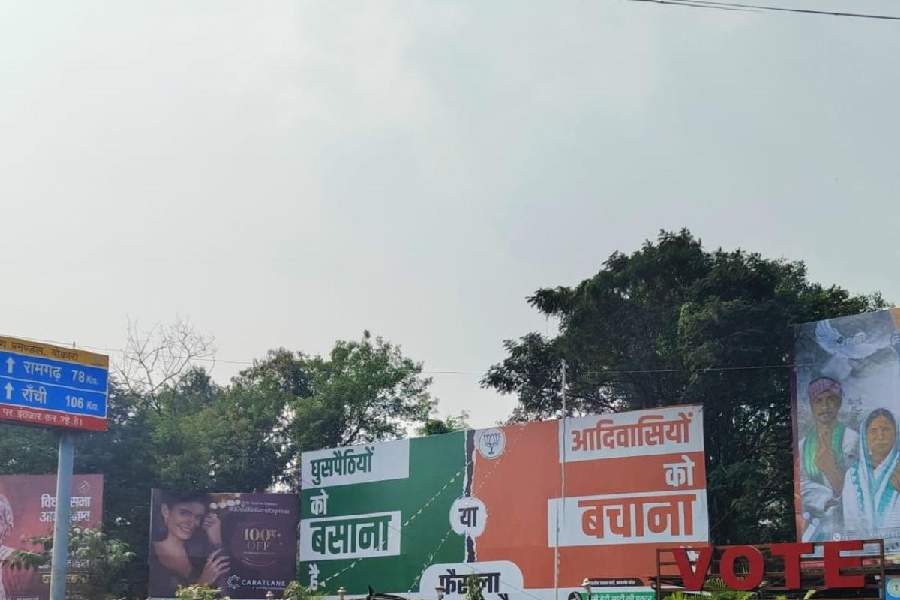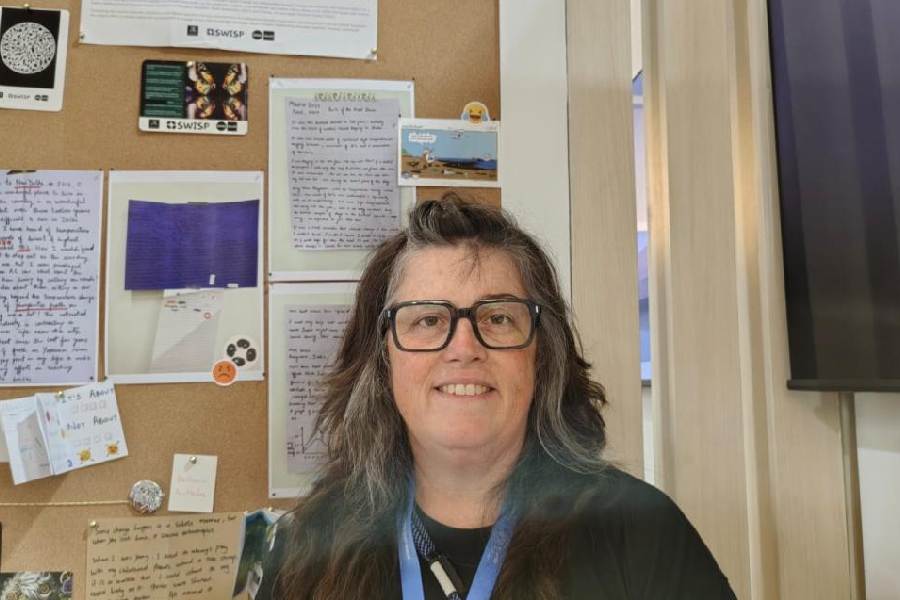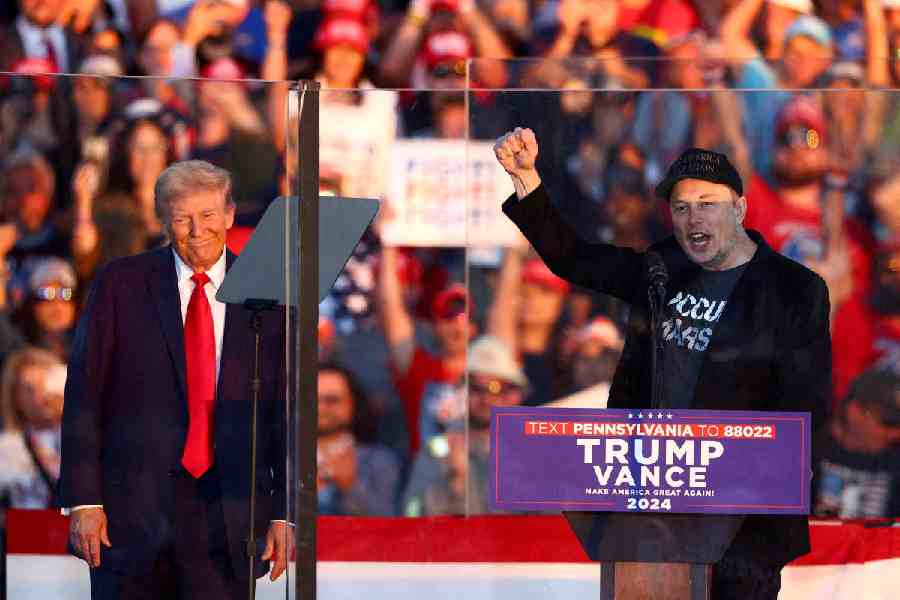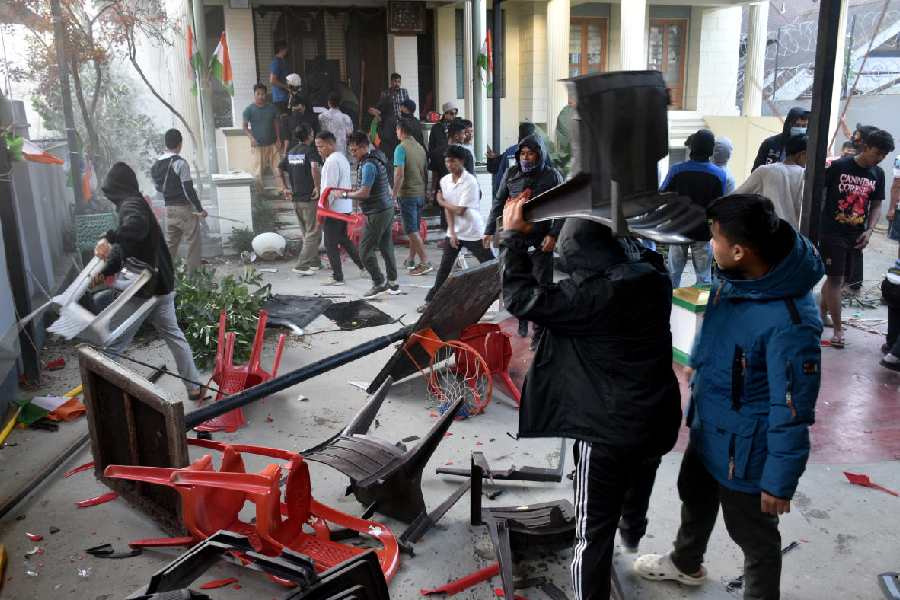Almost every other traffic junction in Jharkhand has huge BJP hoardings that give voters two choices. “Settle infiltrators” or “save Adivasis”, one of them says.
The others too give similar choices, all built around the fear of Bangladeshi immigrants.
The options are strategically written across the green and saffron patches — colours that have political and religious connotations in South Asia — on the hoardings.
These hoardings represent the BJP’s main thrust in the Jharkhand Assembly polls — to project the INDIA bloc as a protector of allegedly undocumented Bangladeshi immigrants who are accused of criminal conspiracies against tribals.
The shortest distance to Bangladesh from Jharkhand is from Pakur district on the northeastern fringes of the state. A stretch of over 9km of land and the Ganga in Bengal lies in between.
Despite constituting 14.53 per cent of the population in Jharkhand, Muslims represent less than five per cent of the Assembly seats in the state. They are not a majority in any district and their highest concentrations are in Pakur and Sahibganj in the Santhal Parganas, where they make up more than 34 per cent of the population. The Santhal Parganas is the stronghold of the ruling Jharkhand Mukti Morcha (JMM).
While most Adivasis, especially the Santhals, back the JMM, party supporters here appear to be on their guard against the BJP’s Bangladesh offensive.
In the JMM bastion of Nala in Jamtara district, Gomeshwar Soren was mobilising supporters in Palajori village for chief minister Hemant Soren’s rally on Friday when a BJP campaign van passed by. It carried a banner asking if “roti, mati, beti” (food, land and daughters) should be saved.
Asked if such slogans influence voters, Gomeshwar said: “There are some arguments between Muslims and others in villages but they are sorted out within the village. I don’t know any Bangladeshis. The Centre guards the borders, and Bengal borders Bangladesh. They should question Mamata Didi, why question us?”
At a CPI office in Nala, senior leaders cut the student comrades short when they spoke about simmering communal tensions in the classrooms.
Asked if there was chatter about the BJP’s campaign in Degree College Nala, student Bidhan Mondal told TheTelegraph: “Some students think like that.”
Elder comrade Nimai Mahato interjected by saying: “Nonsense! They’re poisoning the minds of the people. The CPI had held this seat for nine terms and people here are sensible. We want employment and better education for our children.”
Mondal agreed but added: “Many students see all this on the news. They begin to think differently.”
At the rally, retired teacher Dilip Hembrom blamed the media for promoting the belligerent politics of identity.
“Adivasis, Hindus and Muslims used to live here in peace. We may not be as united as we were but all this propaganda has still not broken our social ties. We created Jharkhand for the benefit of the Adivasis and other indigenous people…. Building unity is difficult but we are still united enough to stop the BJP here,” he said.
Ramchandra Madaiya from Kedwe village in Litipara was all praise for the Hemant Soren government’s welfare schemes. The JMM has won every election from the seat since 1980.
Asked about the BJP’s prospects, he said: “The JMM will win here but sometimes I feel the BJP is right about Bangladeshis. When the BJP was in power, the Muslims were kept in check. Mamata has created this problem for us from Bengal.”
On whether he has had any disagreement with the Muslims, he shook his head and said: “They are a bit rude. Go towards Bhognadih and see.”
In Barhait — the chief minister’s constituency in Pakur district — BJP flags are rare. Bhognadih, the village of the 19th-century Santhal Rebellion leaders Sido and Kanhu Murmu, lies here.
Mandal Murmu, a descendant of the Murmu brothers, was a proposer for Hemant’s nomination. He later defected to the BJP, with former chief minister Champai Soren claiming the decision was driven by the fact that Bangladeshis had come to dominate Bhognadih and waved the flags of only one party from their homes.
The JMM flags dot the village and the neighbouring settlements such as Talbaria Chowk — a popular spot for youths to hang out at night at stalls that serve fritters, boiled eggs and tea. Shopkeepers here speak Santhali, Bengali and Hindi with ease.
Farid Ansari, who describes himself as a Congress supporter, is a regular here.
“I think our unity is stronger now after the Bharat Jodo Nyay Yatra (which passed through Pakur district).”
- Nala, Litipara, and Barhait vote on November 20










